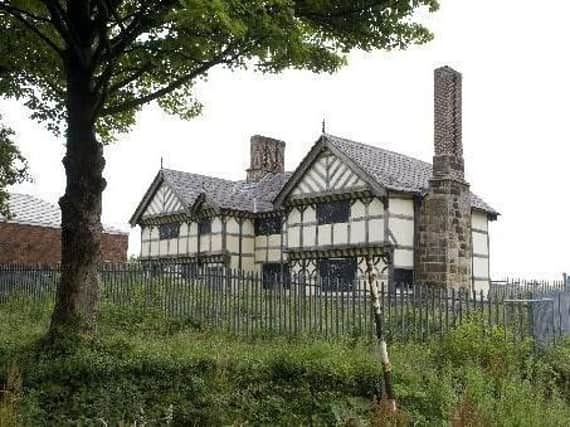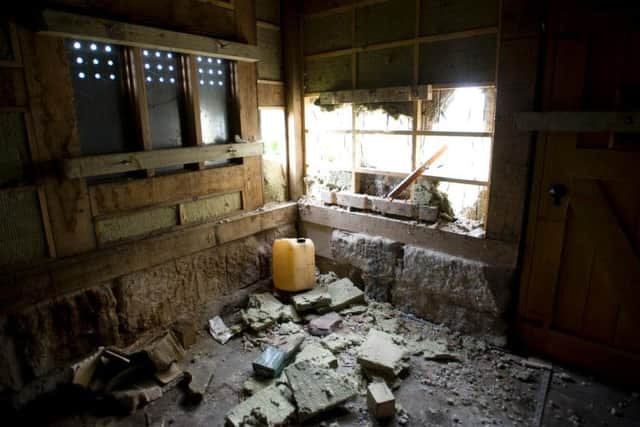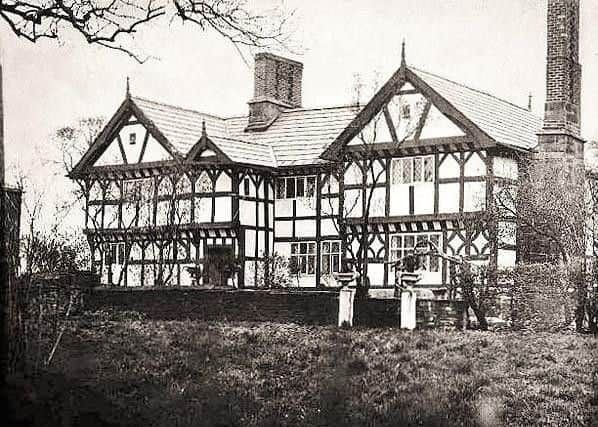Life of a Lancashire treasure wrecked by vandals


According to a tablet on a gable end, Buckshaw Hall was built in 1654. It was the work of Major Edward Robinson, a Roundhead officer, who was a loyal supporter of Oliver Cromwell in those English Civil War days of 1642 -1648.
The Buckshaw Estate was originally in the possession of the Anderton family who sold it to Major Robinson in 1652. While most other land owners were suffering penalties, such as incarceration, for supporting Charles I, he was looked upon favourably by Cromwell and his followers. History tells us that while merely Captain Robinson he was captured near Chorley by Lord Molyneux in 1643 and taken to Lathom House.
Advertisement
Hide AdAdvertisement
Hide AdA book titled ‘A Discourse on the Warre in Lancashire’ is credited to him. He reflected in that manuscript on the heartfelt weariness of war and the despair and hardship which had befallen the population and the soldiers embroiled in the battles. The sequestrated estate of Chorley Hall came into his possession in 1653, although only for the lifetime of Richard Chorley. Consequently, when Chorley died in 1662 the estate reverted to his son and Robinson fell into debt.


In a impoverished state he was obliged to hand Buckshaw Hall over to Richard Brooke of Astley Hall who in return cleared his debts. He died in 1681 and was buried at Leyland Parish Church. His name appears among the founders of Chorley Grammar School and it is claimed he was a keen fund raiser for the school, being credited with persuading officers and men who fought on Cromwell’s side to donate the princely sum of £86 to school funds.
Along with Sir Richard Standish he was elevated to the role of Justice of the Peace for Chorley, and became the first magistrate to conduct a marriage in Chorley Market Place – at a time when the so called ‘Barebones Parliament’ came into being following the execution of Charles I. The Buckshaw estate was owned by John Walmsley in the 19th century before later passing into the ownership of the Townley-Parker family and the Cross family of Shaw Hill. In 1850 the estate made the news in the local paper when it was announced that farmer Richard Dickinson, of Buckshaw Hall, and his wife had between them destroyed no less than 162 rats discovered in one stack of grain.
Mrs. Dickinson with her own hands had unflinchingly killed 42 of the vermin. This was the Richard Dickinson who 10 years earlier had scooped an award from the Leyland Agricultural Society for an excellent crop of Swedish turnips. According to a second date panel of 1885, mounted on the gable of the south wing, this Elizabethan-style half timbered structure underwent considerable restoration work by Colonel Thomas Richard Crosse.
Advertisement
Hide AdAdvertisement
Hide AdThe two storey timber hall having its central part flanked by two protruding gables, one at each end with two brick chimneys built into northerly and southerly elevations. The last private occupant of Buckshaw Hall was Richard Stock who purchased it circa 1923 and who was associated with Cowling Mill at Chorley, holding the position of secretary and sales director there. Also owning the extensive Lower Buckshaw Farm which he let to Robert Critchley who farmed much of the surrounding land at that time.


Another familiar name from the area was Thomas Wilcock who was born at Buckshaw Hall farm and spent much of his early life farming in the district. He then spent a long period partaking in seafaring adventures before returning to the land and farming at Charnock House farm where his agricultural knowledge became recognised far and wide. He died in 1940, aged 96, when he was said to be Chorley’s oldest resident. Robert Stock’s association with the building ended in 1936 when the Government took over the premises which were inside the area earmarked for the Royal Ordnance munitions factory.
Lower Buckshaw Farm was the land just beyond the Preston-Bolton railway line and like the railway was enclosed within the perimeter fencing of the ROF in 1937. The building of the munitions factory site was a great undertaking with more than 4,000 men involved in the project and working around the clock. Part of the undertaking was the building of the Euxton Viaduct spanning the main railway line, that alone cost over £90,000.
Buckshaw Hall itself became the official residence of the engineer in charge of the munitions factory site. The Royal Ordnance Factory closed in 2005 and the estate reverted to private ownership with the land being developed as Buckshaw Village. After decades of neglect Buckshaw Hall became a target for vandals and in July 2012 its windows were smashed, walls damaged and historical features destroyed.
Advertisement
Hide AdAdvertisement
Hide AdDespite his affection for the place owner John Greenhalgh found the costs of restoration work were restrictive with its Grade II listed status meaning the work carried out had to be done to recreate the old features. Despite more than £500,000 being spent on external restoration in 2008 when Buckshaw Village was being developed more needed to be done.
With Buckshaw Hall now auctioned off it seems like the building surrounded by lands where Cavaliers and Roundheads once roamed could have a bright future after years of decline.